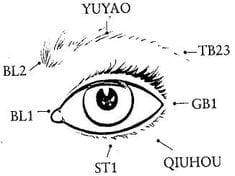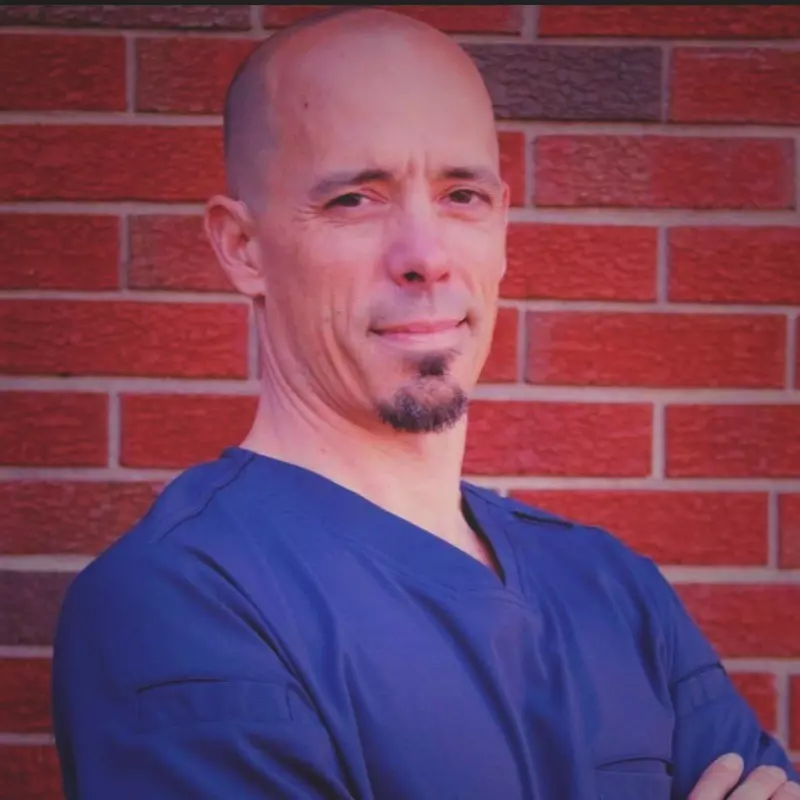Patients Experiencing Positive Results with Acupuncture for Vision Loss
Approximately 285 million people worldwide are visually impaired: 39 million are blind and 246 million have low vision. Many of these conditions are considered untreatable by conventional medicine, often leaving patients in a hopeless situation.
My interest in treating degenerative eye diseases began when I was an acupuncture student at Pacific College of Health Sciences in San Diego. As a result of the intense reading, writing, studying, and computer work, my eyesight was noticeably deteriorating, and my corrective prescription was getting progressively stronger.
I decided to try to some acupuncture on myself for a few months and a routine screening by my optometrist revealed that the astigmatism in both of my eyes had resolved and that my prescription no longer needed to be as strong. The optometrist was astounded, and asked what I had been doing. I explained that my eyes had been feeling tired, blurry, and that I was getting minor headaches from studying so much, so had started using acupuncture to see if it would help my vision. A few years later, as I began my clinical practice, I took on a few cases of degenerative eye conditions including glaucoma, cataracts and macular degeneration. Some cases were mild, and some were severe; some patients were even legally blind.
I found that I became rather frustrated with my results. A few patients showed some minor improvements but nothing exceptional. I began to seek the aid of others in the AOM field who had had success treating eye diseases. For the most part, other than suggestions of reviewing my diagnosis, everyone seemed to have the same points, the same herbal formula suggestions. I tried them all, to no avail! One day while reading a health magazine, I came across an acupuncturist in Arkansas named Otte who was treating people with macular degeneration and claiming excellent results.
I called to find out what methods he was using. The long and short of that story is that I would have to wait three years before I could train with him. Finally, however, I made it out to his clinic to train and was amazed at his success rate, as well as the overwhelmingly positive testimonials given by each patient I talked to–most had macular degeneration. “Wow!” I thought, “this is incredible. This Micro Acupuncture is really helping people to see again.” I went back to my practice in New Jersey and started working on myself, my friends, family, current patients, and so on for the next 6 months. The results I got were nothing short of amazing!
So what is Micro Acupuncture?
Micro Acupuncture is a relatively new acupuncture system developed in Denmark in 1984 that involves 48 acupuncture points located only in the hands and feet, and is generally not associated with any other acupuncture system. It’s used for a variety of health conditions and is effective for treating pain.
The best results that I have seen clinically are for pain, peripheral neuropathies, and for eye diseases. The most commonly treated eye conditions that have seen stellar results include macular degeneration, glaucoma, diabetic retinopathy, Usher’s syndrome, optic nerve atrophy and retinitis pigmentosa.
Using Micro Acupuncture, I have had a great deal of positive, measurable clinical results. Responses vary widely from patient to patient depending on how well the individual responds to the treatment. The amount of treatment a patient needs also depend on how well patients responds and other co-existing health issues.
Are you interested in becoming a certified acupuncture professional?
Visit the links below to explore our specialized acupuncture programs at a campus near you:
I have found that it is not always best to rely on the patient’s subjective reports for confirming definitive response or non-response. For this reason I recommend that ALL eye patients have vision testing done before they begin and then again after a serried of treatments. This vision test enables us to map the progress of the patient over time and confirm measurable response.
Clinical Applications and Efficacy of Micro Acupuncture
When treating eye patients in conjunction with micro acupuncture, I usually recommend Chinese herbs and nutritional supplements. Among the most common supplement I suggest for eye diseases are ginkgo biloba, fish oil, lutein, bilberry, L-taurine, and zeaxanthin. Chinese herbal formulas are prescribed (as expected) based on individual TCM pattern diagnosis, rather then just giving everyone a generic formula like Qi Ju Di Haung Wan.
Also, I have found that a significant number of my patients have free radical damage and oxidative stress. In these cases, administering anti-oxidants is extremely important in overall vision preservation.
There are many good anti-oxidant formulas on the market today, but from a TCM viewpoint, we know that different substances will have different effects. For example, green tea is one of the best known antioxidants, very drying in nature (not wise to use with a yin-deficient patient), whereas blackcurrant seed oil is another great antioxidant that would nourish yin for that same patient. Other antioxidants include vitamins A, C, and E; Selenium; and Zinc. IV glutathione treatment is by far one of the most potent means of reducing free radical damage.
Acupuncture as a Hope for Degenerative Eye Conditions
For many who suffer from these degenerative eye conditions, acupuncture and Oriental medicine may be the last and only hope for vision recovery and preservation. Conventional medicine often has little or nothing to offer folks diagnosed with degenerative vision loss. Two case studies:
CASE STUDY #1: JA, 63-year-old female
Western Diagnosis: dry-type ARMD
Chinese Medical Diagnosis: kidney and liver yin and blood insufficiency
MA Points: Foot: SP-A/B, LR-A, KI-A, GB-A
Hand: LU-A, HT-A, SI-A
| INITIAL EXAM | AFTER TREATMENT |
|
Visual Field Scan Right Eye Left Eye |
Visual Field Scan Right Eye Left Eye |
|
Visual Acuity Right Eye: 20/100 Left Eye: 20/80 |
Visual Acuity Right Eye: 20/50 Left Eye: 20/50 |
|
Comments: Diagnosed with hypothyroidism, high cholesterol, and allergic asthma. The medicines she is taking for these conditions can have a negative impact on her vision. |
Comments: Patient reported more brightness, reduced line distortion on the Amsler grid, and sharper color distinction. |
Discussion:
JA presented with relatively moderate-stage dry-type ARMD in her left eye. She had great results with acupuncture, eye nutrients, essential oils, and Chinese herbs (mingmu dihuang tang). She continues on these herbs and supplements.
JA continues to have clear vision with minimal distortion, even years after she started therapy. Her case is a clear indication of how tremendously effective Chinese medicine can be for dry-type ARMD.
CASE STUDY #2: HH, 72-year-old female
Western Diagnosis: wet-type ARMD
Chinese Medical Diagnosis: spleen and kidney yang weakness with extreme damp accumulation and yin excess
MA Points: Foot: SP-A/B, KI-AB, LR-A, GB-A
Hand: LU-A, SJ-A, SI-A
| INITIAL EXAM | AFTER TREATMENT |
|
Visual Field Scan Right Eye Left Eye |
Visual Field Scan Right Eye Left Eye |
|
Visual Acuity Right Eye: 20/800 Left Eye: 20/400 |
Visual Acuity Right Eye: 20/400 Left Eye: 20/250 |
|
Comments: Frequent retinal bleeding and rapidly declining vision. |
Comments: Patient reports a “major benefit” from treatment and sees TV much better as well as cars when crossing the street. |
Discussion:
HH has wet-type ARMD in her right eye and dry-type ARMD in her left eye. She has had a history of chronic leaking and hemorrhaging due to the overgrowth of blood vessels in her right eye. A few laser surgical procedures and cortisone injections in the past had stopped the retinal bleeding. Shell moxibustion was used over the right eye in an attempt to help the frequent bleeding episodes. Acupuncture, Chinese herbs (Qi Ju Di Huang Wan), and eye supplements were used.
After one year of no reported retinal bleeding, HH began using microcurrent stimulation. Her vision is stable, and she reports much less blurred vision (which was a result of the retinal bleeding).
Micro Acupuncture can offer so much hope to so many in need. It is our duty as doctors to help educate and treat this population in need. Sitting around and waiting for conventional research to come up with a solution is disempowering and a poor strategy for these patients. Vision will continue to decline as people sit back and wait for modern medicine to save them. We can do something TODAY to help these people save their sight!
Featured Posts:










